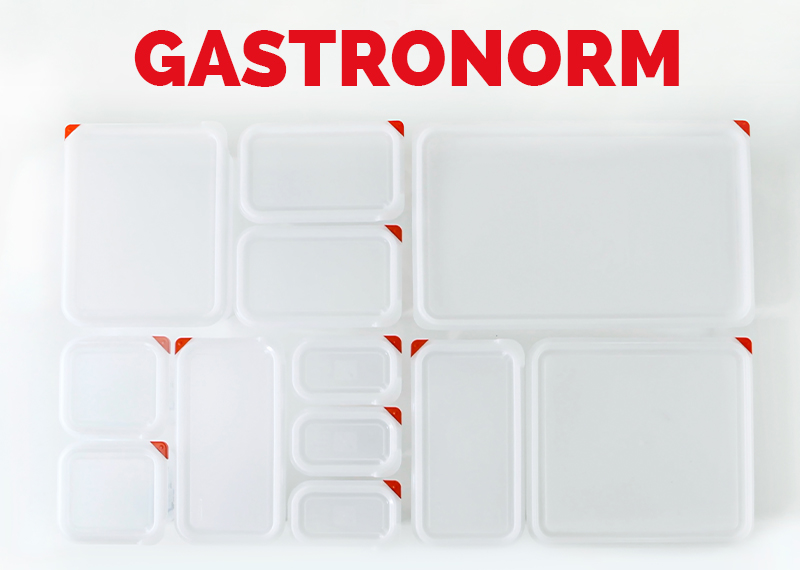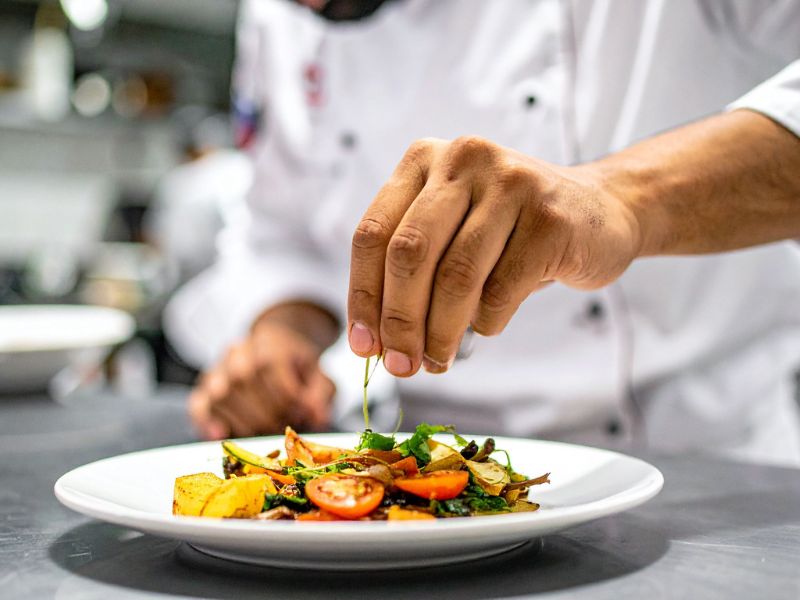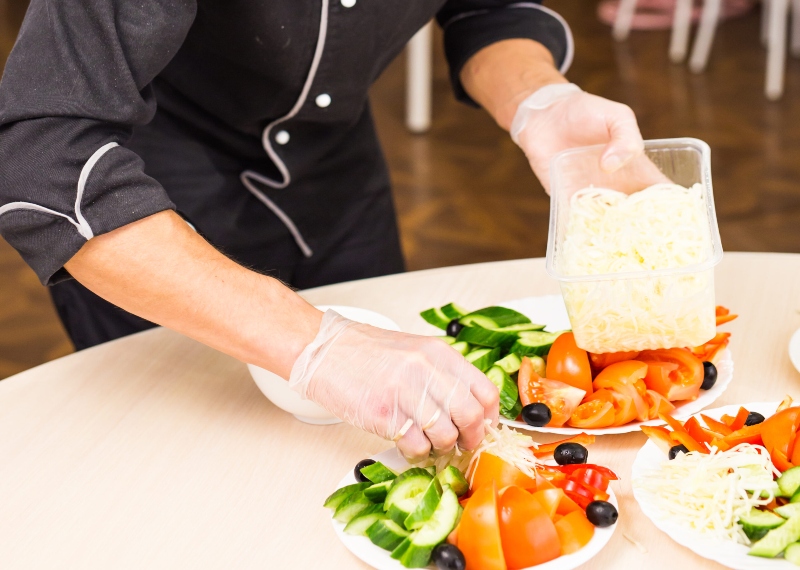The food service equipment industry uses standard-sized products so that all equipment, appliances, and containers can be used in all kitchens, cold rooms, and display areas.
Thus, Gastronorm standardizes all containers used by the food service industry to optimize kitchen space.
In professional kitchens, you can find containers and food pans designed according to standard Gastronorm sizes. At Araven, we adhere to the GN size standard for our products (EN631-1:1993 standard by the European Committee for Standardization). Keep reading to learn more!
Origin of Gastronorm Sizes
Gastronorm sizes originated from the needs of the Swiss hospitality industry. In the 1960s, there was no uniformity between kitchen equipment manufacturers and utensil manufacturers. As a result, kitchen professionals sometimes faced surreal situations, such as oven trays that didn’t fit into ovens.
Therefore, on November 17, 1964, standard dimensions for the size of these kitchen items, such as Gastronorm containers, were finally created.
What is the Purpose of the GN Sizes?
As mentioned above, the Gastronorm (GN) format are standard measurements for the dimensions of containers, trays, grids, pans, and other kitchen items. By standardizing these tools’ dimensions, space is optimized, and kitchen equipment becomes much more functional.
Thus, restaurants, catering companies, hotels, and other food service businesses use storage and organization systems wth GN sizes.
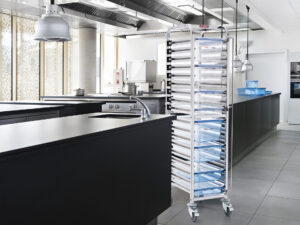
It’s worth noting that these products with GN sizes are used not only for storing and transporting food, but also for cooking it. In this sense, Gastronorm containers and food pans with lids from Araven are indispensable allies for easy handling of raw materials and perfect preservation of ingredients.
What are the Advantages of the GN or Gastronorm Sizes?
Why use the GN sizes? The use of Gastronorm airtight containers offers several advantages. Here are the main ones:
- Better Storage: Gastronorm sizes allow for standardized storage in kitchens, simplifying management.
- Optimization of Raw Materials: Improved storage minimizes food waste.
- Optimization of Work Equipment: Kitchen equipment is optimized, making it easier to find containers in professional kitchens.
- Space Optimization: It allows for better use of space, maximizing its potential.
- Improvement of Work Processes: Better kitchen management and organization positively impact work processes.
What are the Different Gastronorm Sizes?
Regarding Gastronorm sizes, it is important to underline that the base size is GN 1/1, corresponding to one unit and having standard dimensions of 530 x 325 mm. However, there are various sizes available.
Gastronorm Tray Dimensions
The Gastronorm tray dimensions can vary according to the depth of the products. It is also the case with containers. The depth is crucial for calculating portions in a restaurant. For example, 10 GN 1/1 containers with a depth of 65 mm equal approximately 360 servings.
- GN 2/1: 650 × 530 mm
- GN 1/1: 530 × 325 mm
- GN 2/3: 354 × 325 mm
- GN 2/4: 530 × 162 mm
- GN 2/8: 325 x 132 mm
- GN 1/2: 325 × 265 mm
- GN 1/3: 325 × 176 mm
- GN 1/4: 265 × 163 mm
- GN 1/6: 176 × 162 mm
- GN 1/9: 108 × 176 mm
Here is a table with these Gastronorm Tray Dimensions:
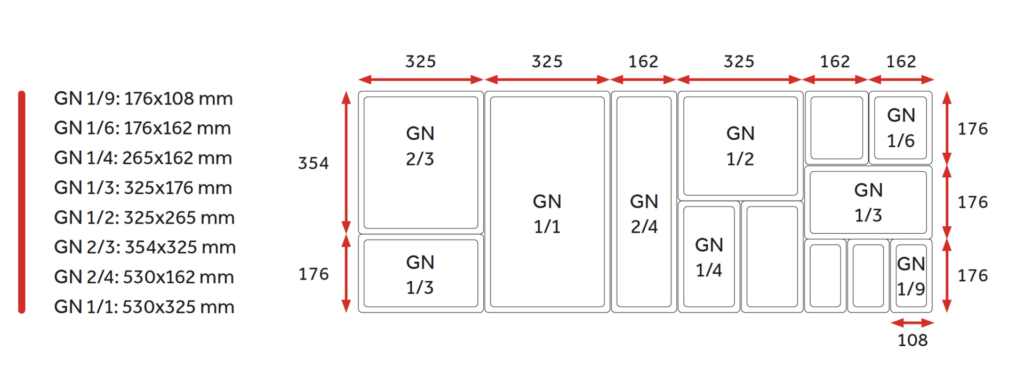
What Materials are Used for Gastronorm Containers?
Various materials are used to manufacture Gastronorm products. Here are the most common ones:
- Polypropylene: Highly impact-resistant, this material performs well at high temperatures. It offers high heat resistance (up to 95 °C) and can also withstand low temperatures, down to -40 °C. It is also BPA-free. Polypropylene is the most common solution among food service professionals for food preservation. For instance, these Gastronorm containers with polypropylene lids.
- Stainless Steel: Thanks to its heat and corrosion resistance, it is one of the best materials for professional kitchens. Additionally, it is easy to clean and handle.
- Polycarbonate: Lightweight, unbreakable, and suitable for various designs, this material is also transparent, allowing for quick identification of the food it contains and its condition. Gastronorm containers made of polycarbonate are ideal for transporting and refrigerating food, as this material can withstand temperatures ranging from -40 to 99 °C. At Araven, we offer Gastronorm containers with polycarbonate lids.
- Porcelain: Used in food service due to its hygiene and versatility. However, it has a significant drawback: its fragility. It breaks very easily.
- Melamine: An organic compound that can withstand temperatures between -20 and 70 °C.
- Polyethylene: This material is also used to create Gastronorm items, as it has good impact resistance and is suitable for freezing. Additionally, polyethylene is BPA-free.
Find a Wide Variety of Gastronorm Products at Araven!
Now that you know the different Gastronorm tray dimensions and all their advantages, it’s time to purchase products that meet these international standards. At Araven, we have a wide collection of Gastronorm products, perfect for the food service industry. Discover them on our website!
